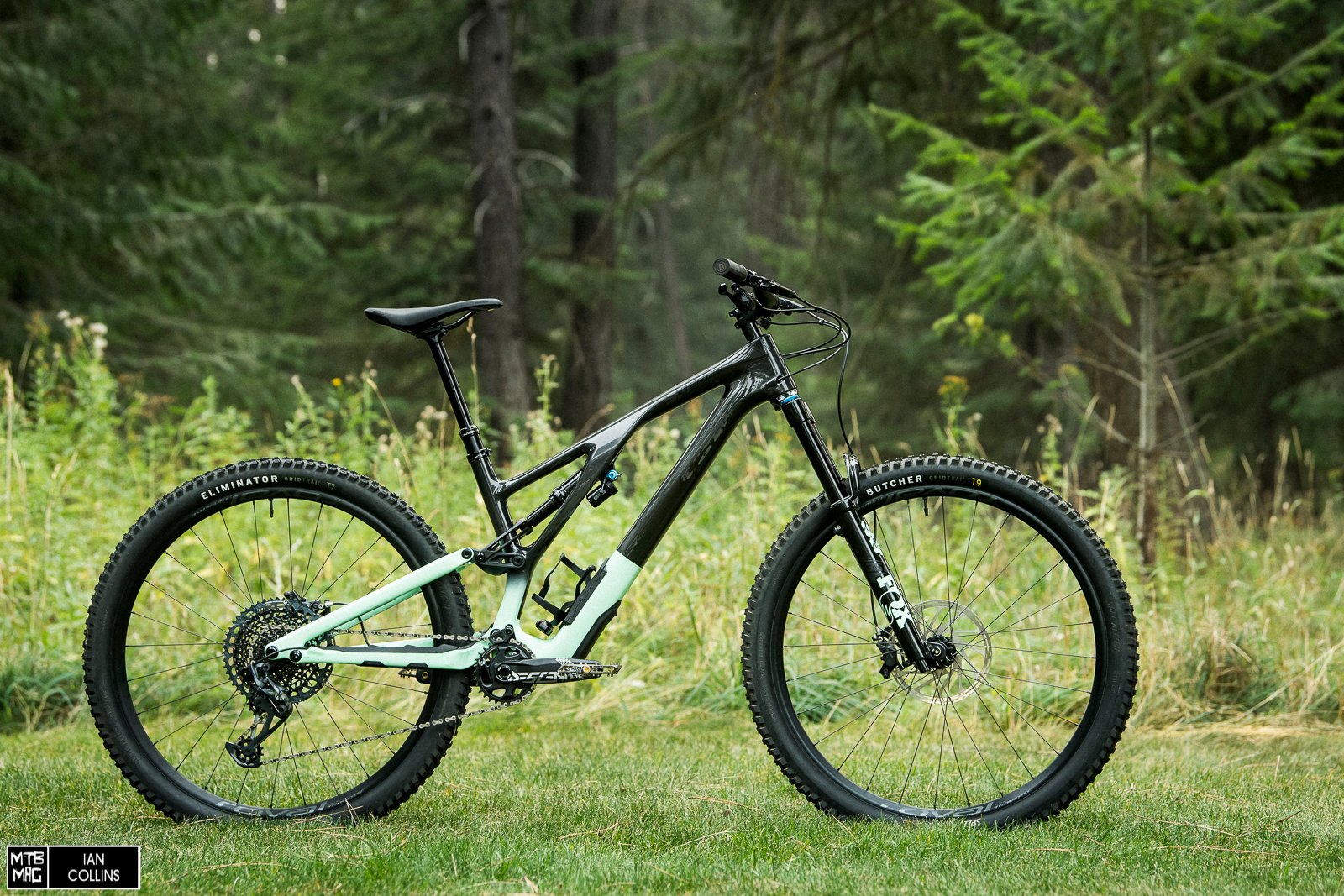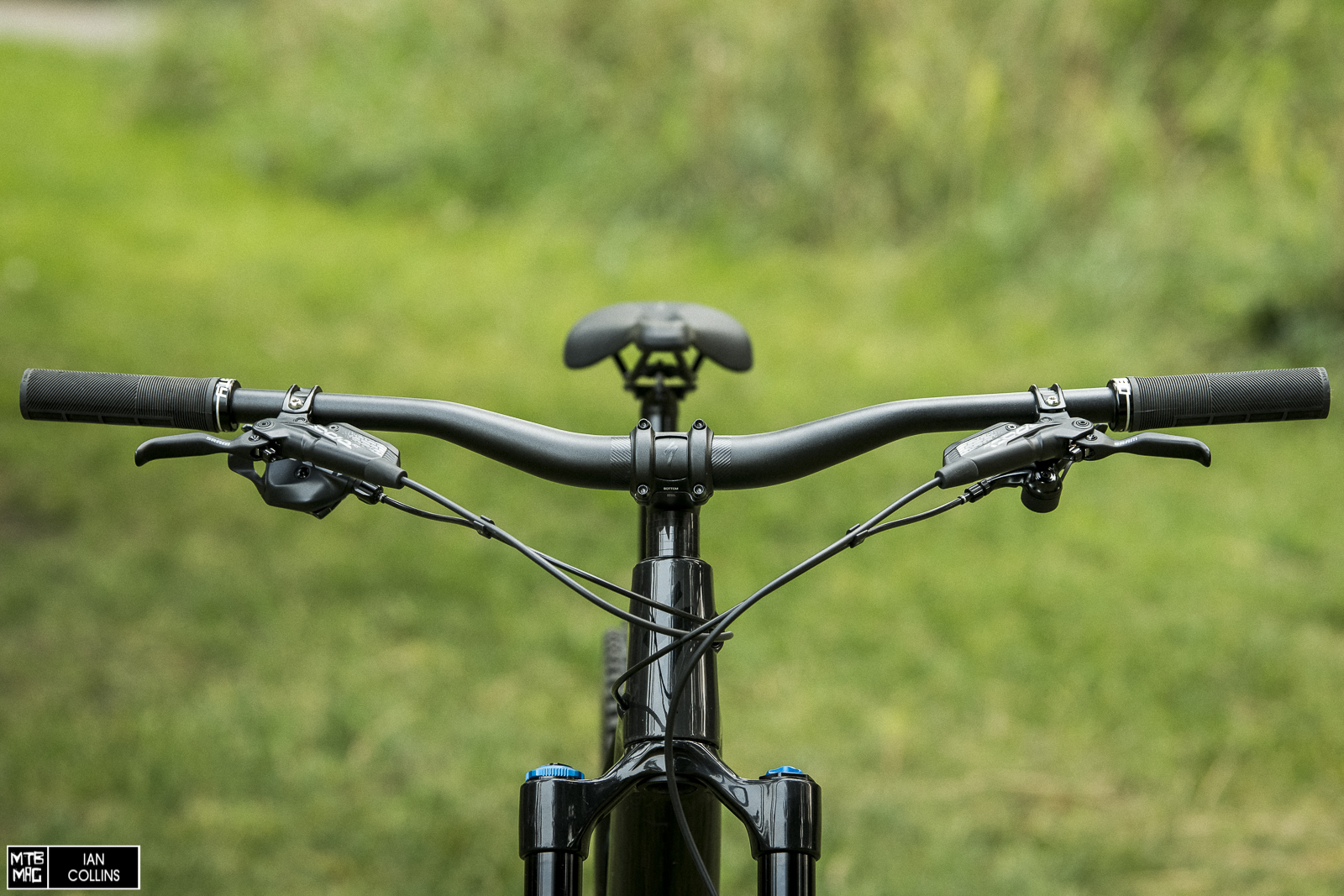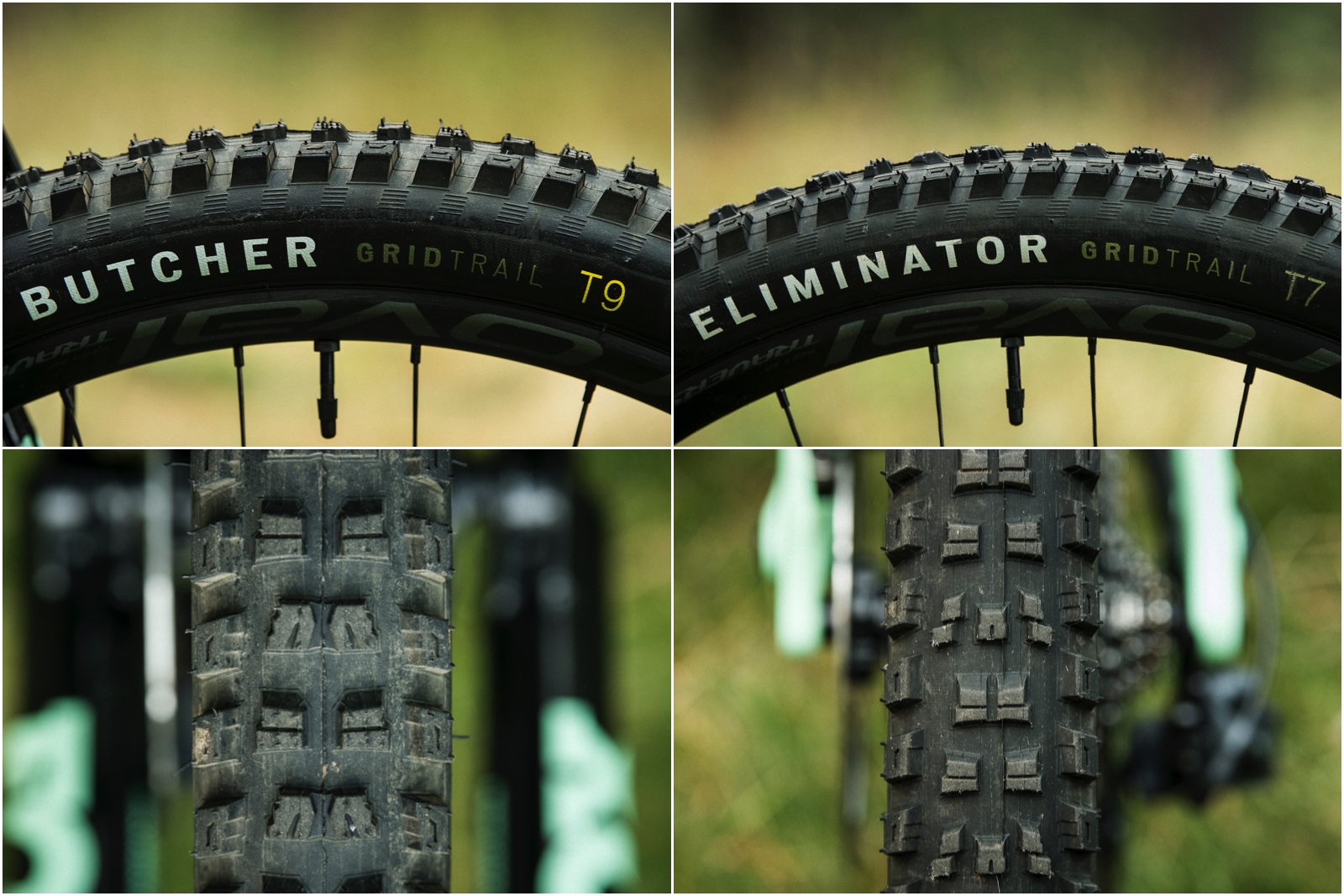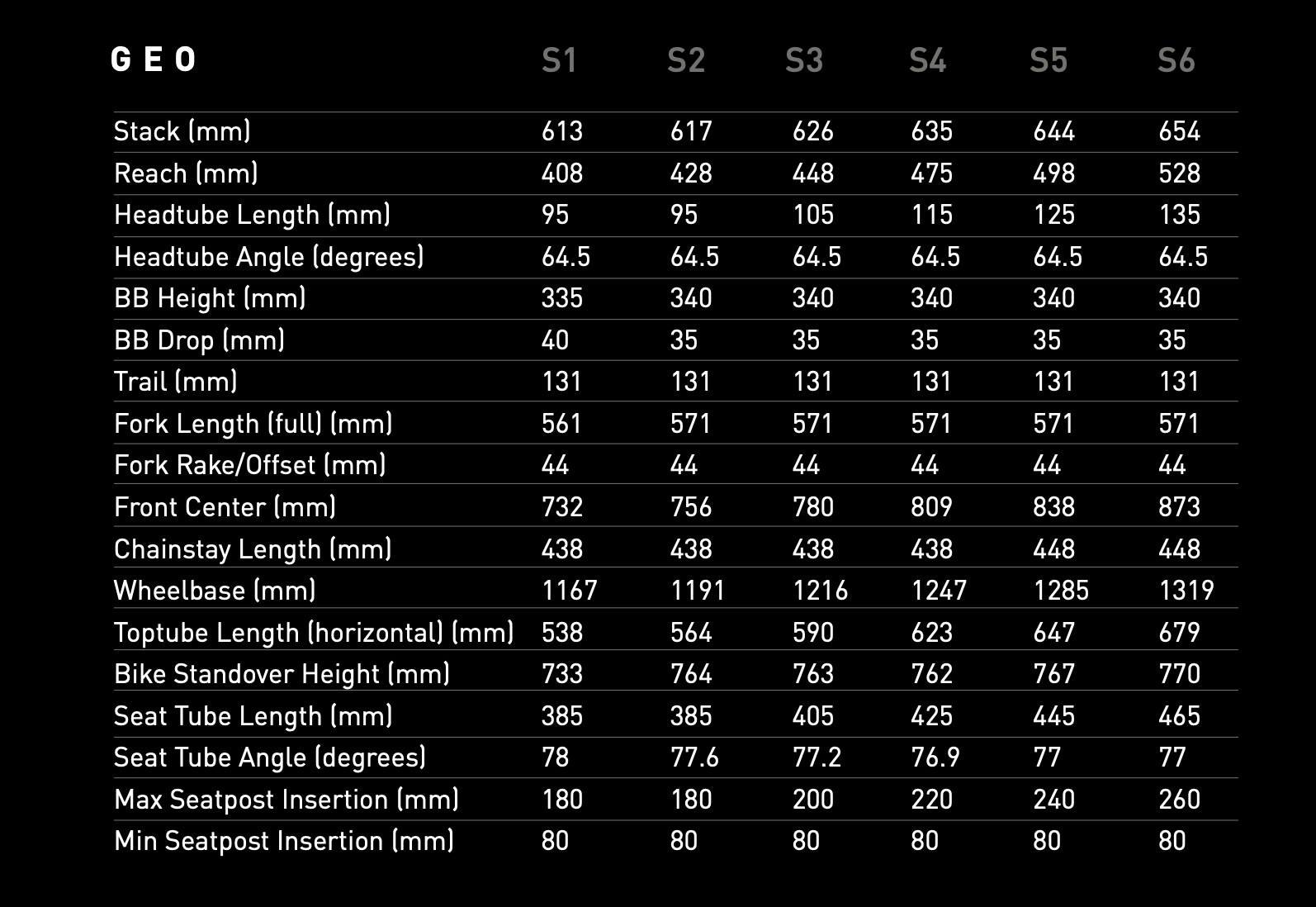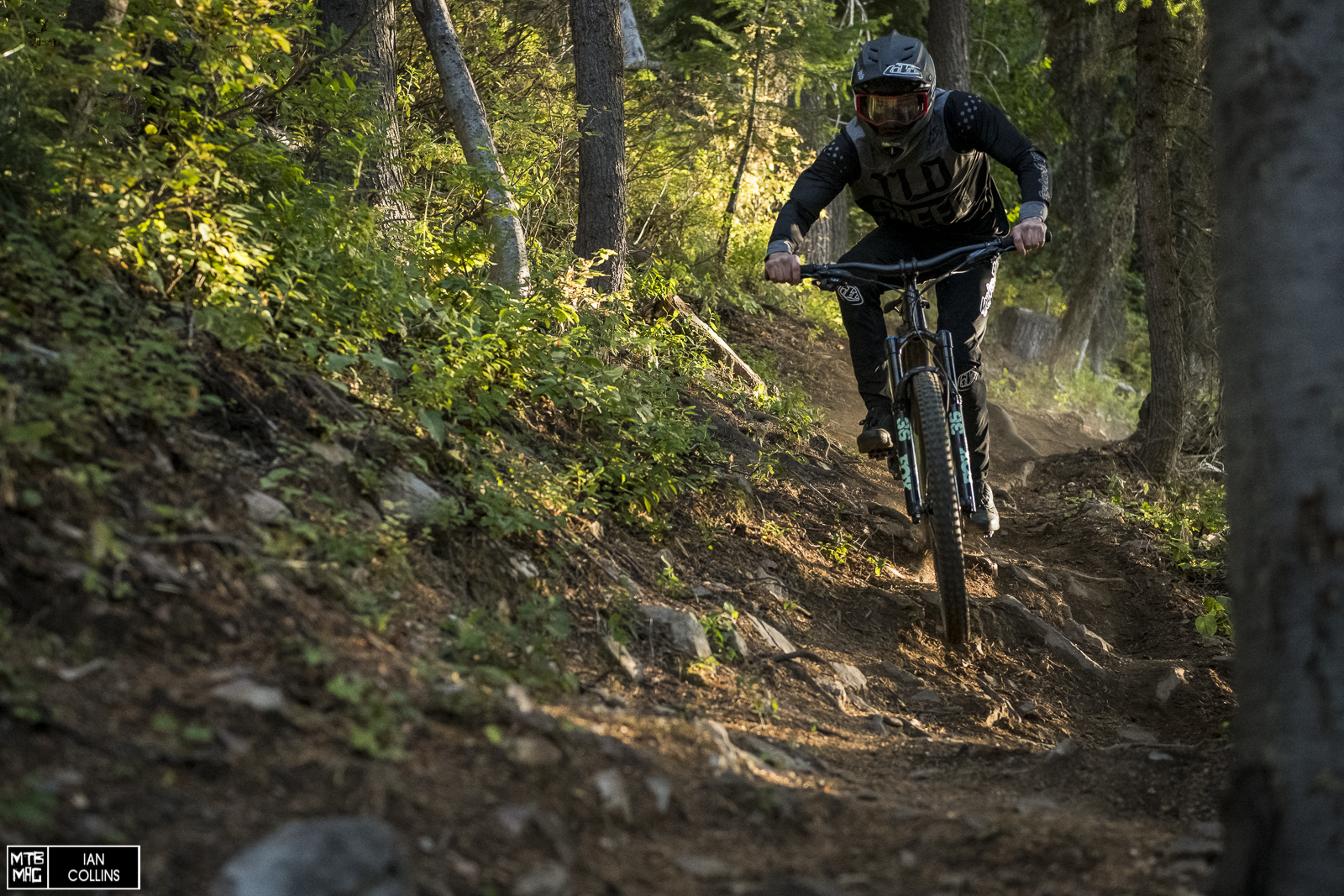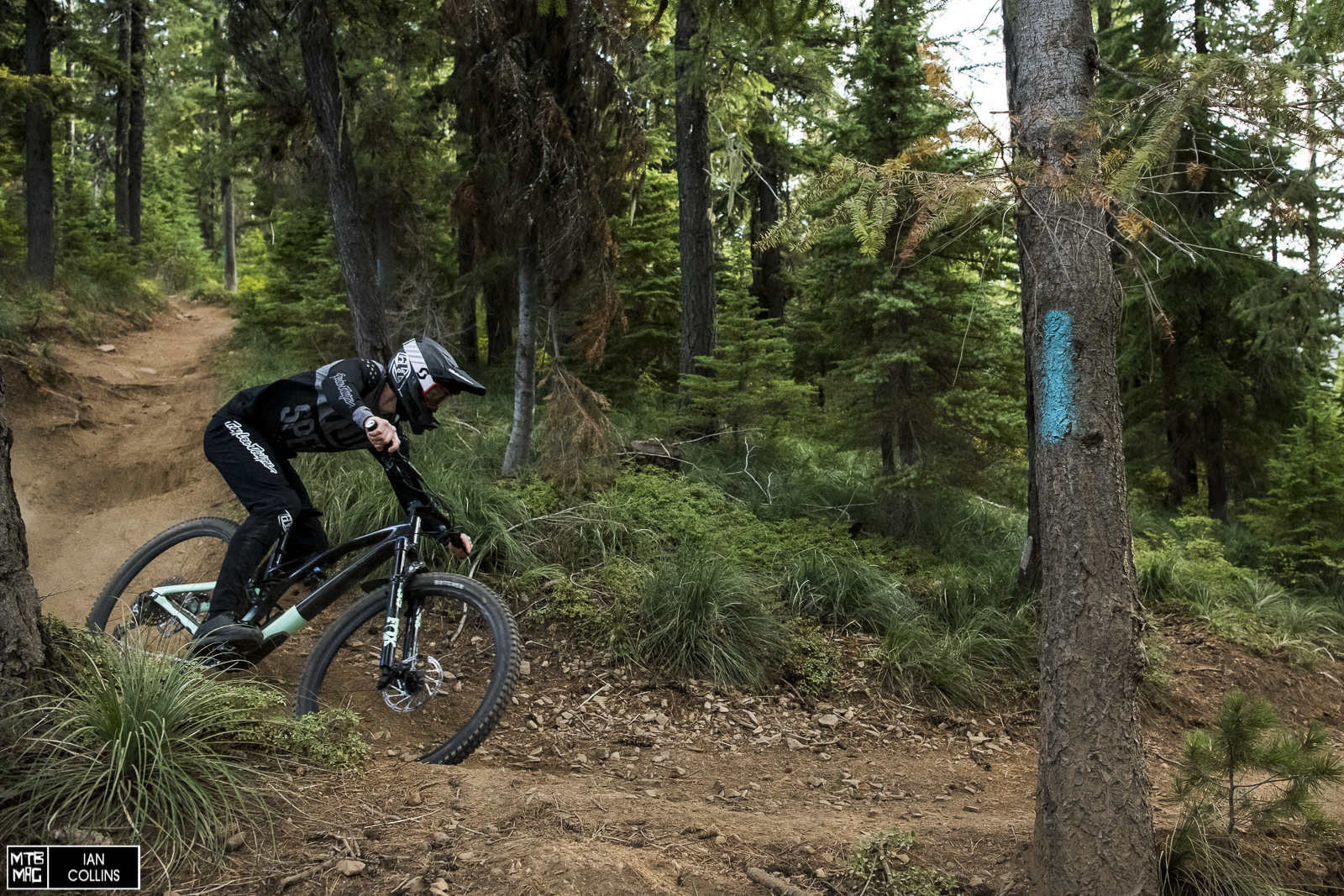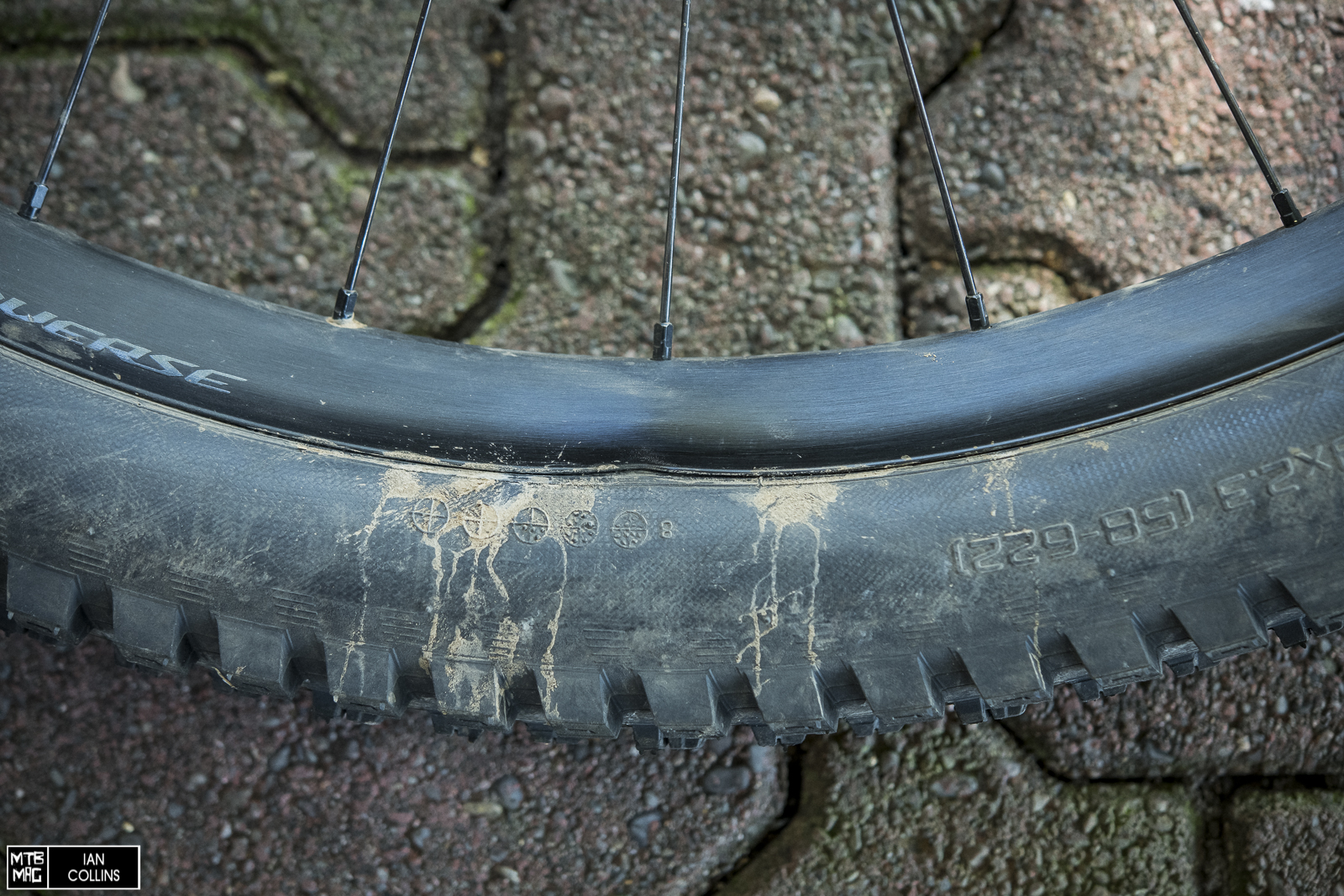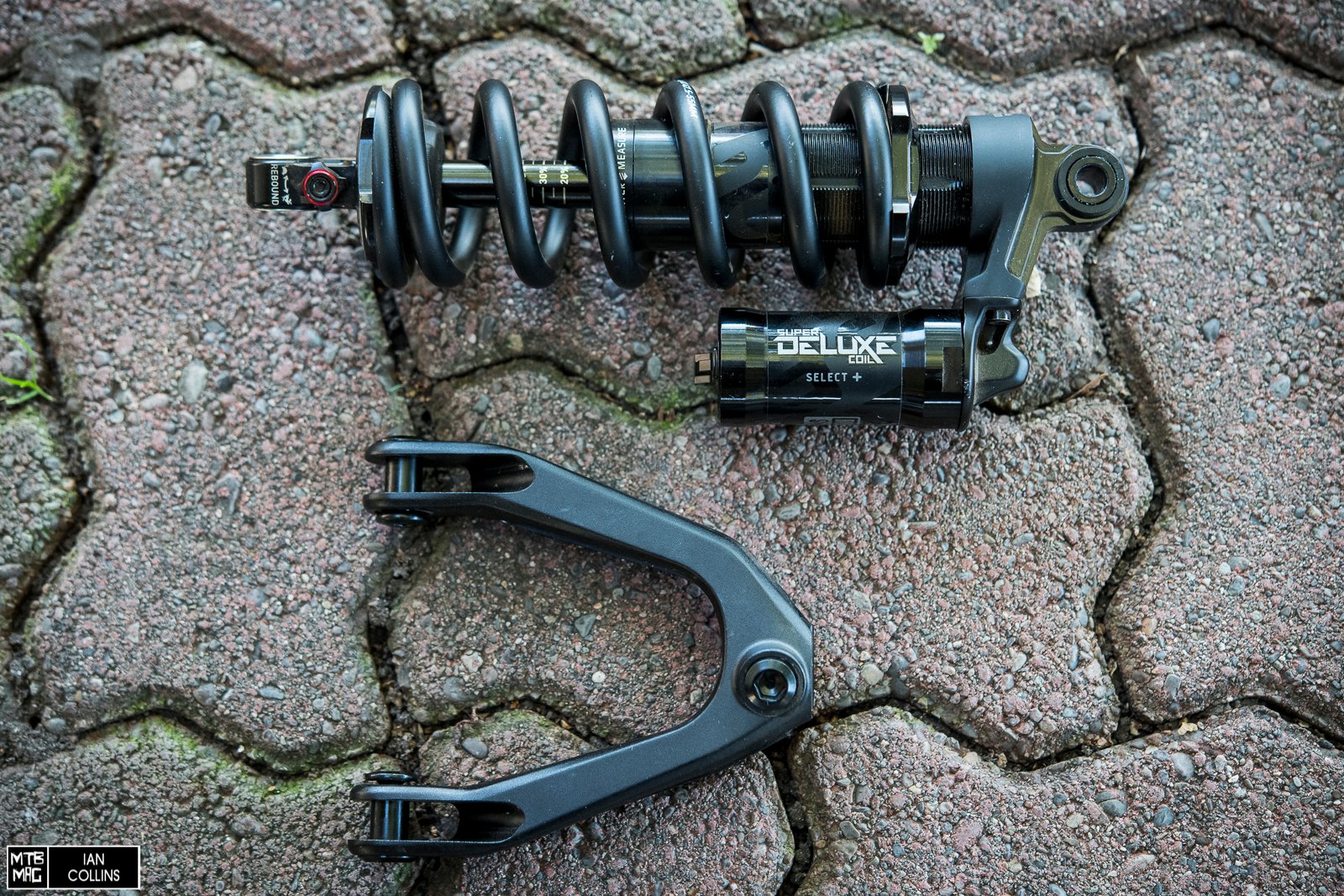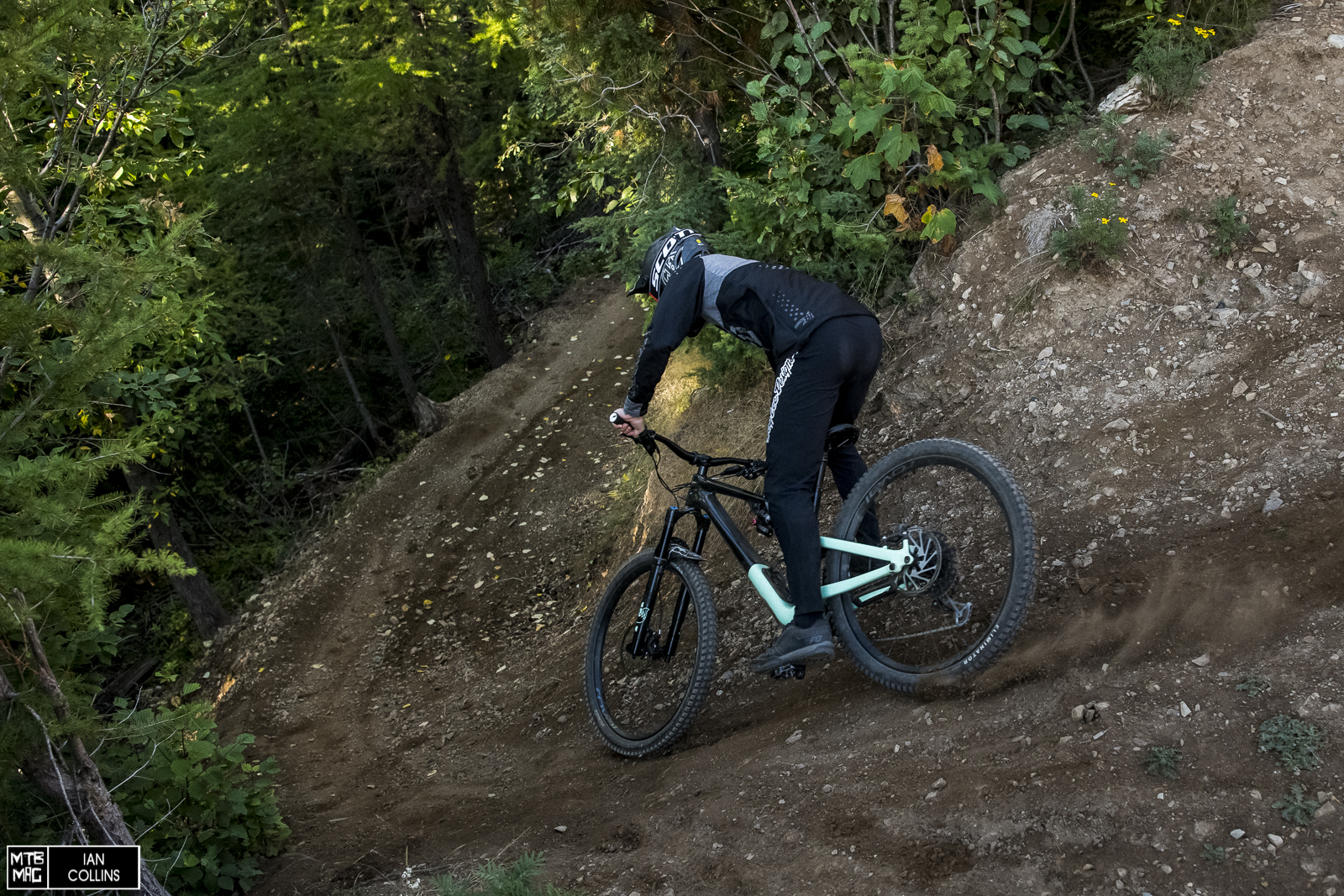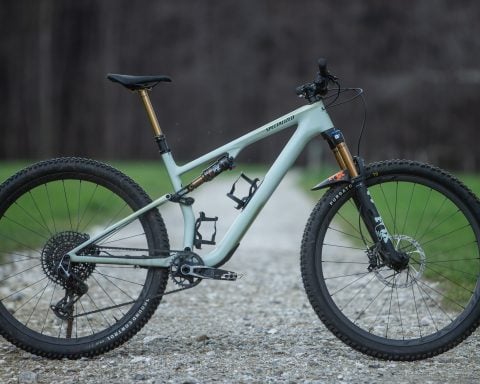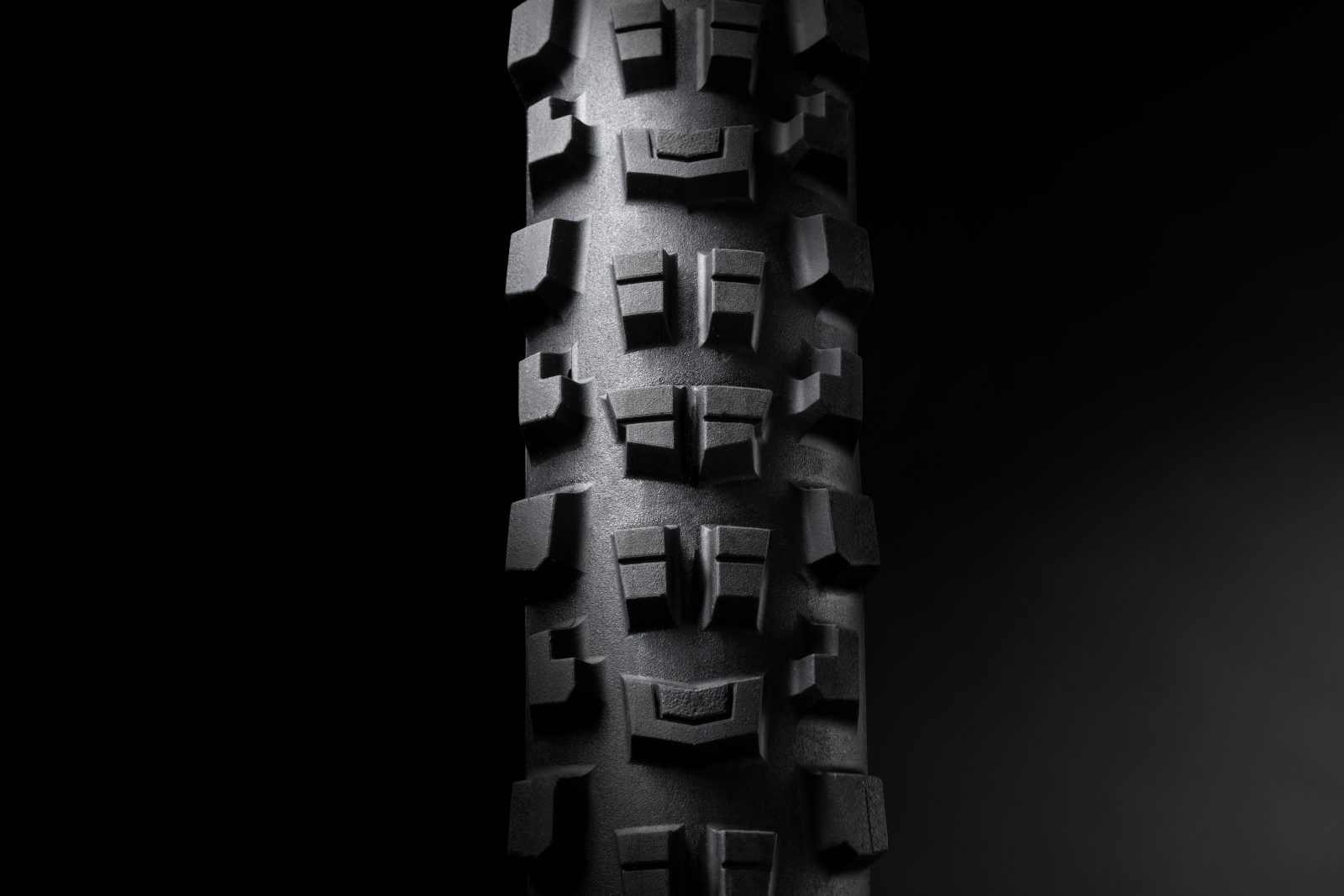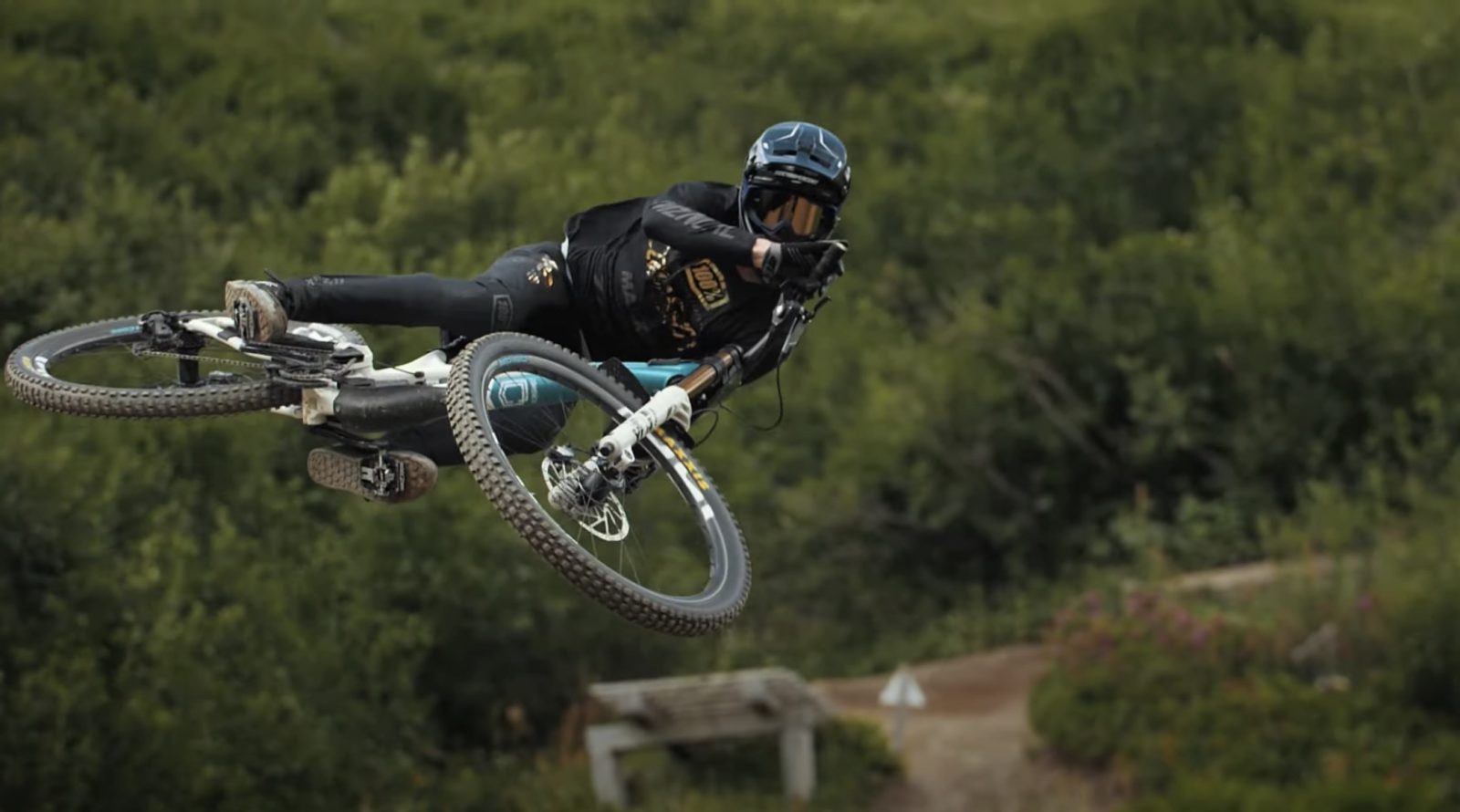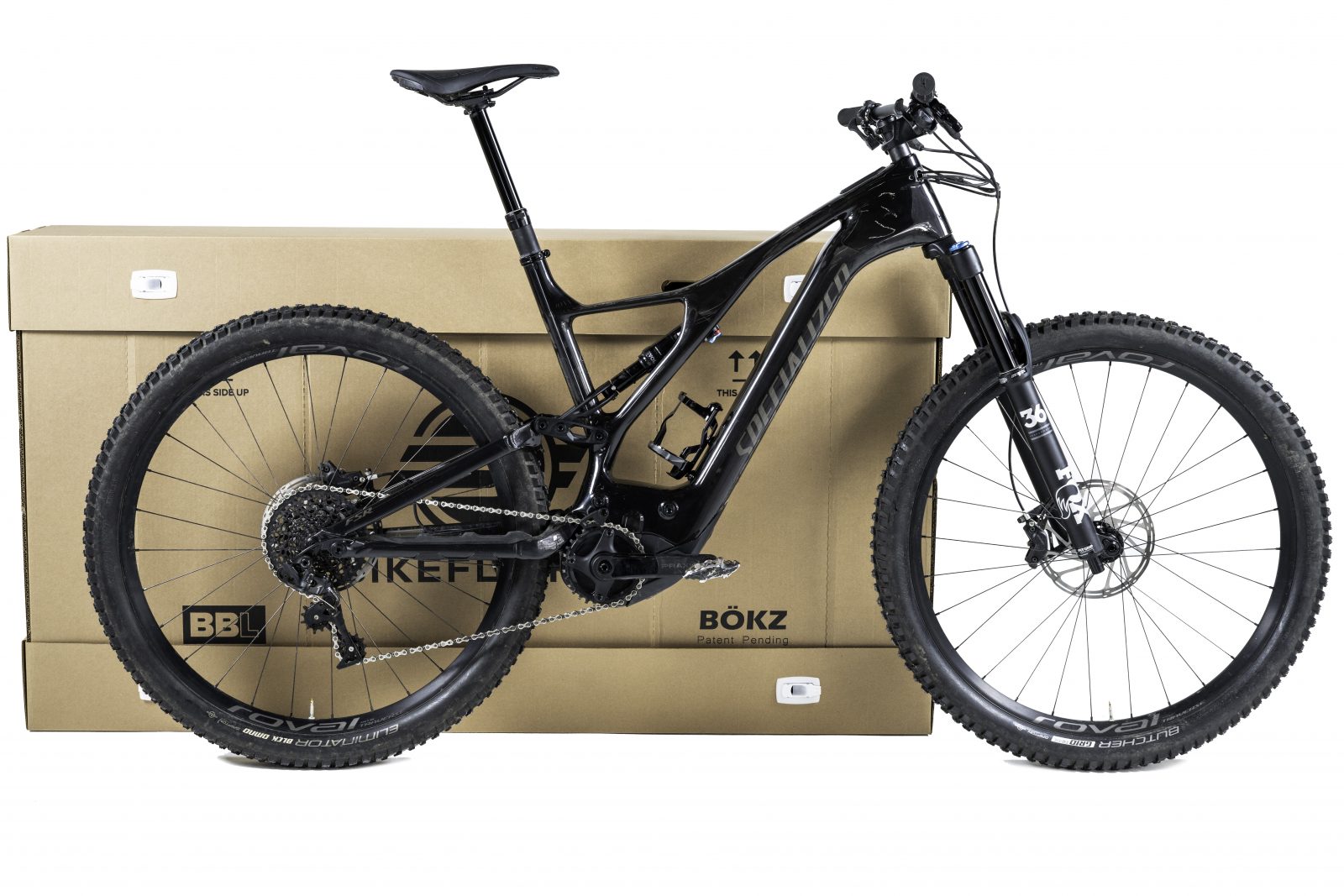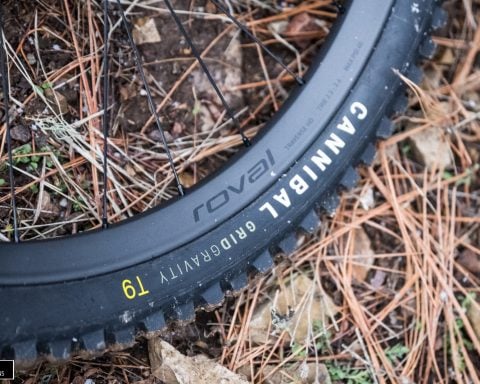Oh man…Where do we even begin with this one? The last time I tested a Stumpjumper EVO, it was in the shape of something a bit more crude and less refined than the bike we’re about to discuss. To start, the bike was aluminum, had no SWAT storage, and the suspension was a little rough around the edges. However, with cutting edge geometry it would best be described as a utilitarian “shredder’s bike”. At the time that I rode it, I had a few bones to pick, but it did earn the tip of the hat for its aggressive disposition. Fast forward a couple of years and Stumpy EVO’s once bold geometry is now the new norm…
And here we are today, having a look at its successor – polished, refined, and packed with smart features. Via a slew of options to quickly adjust, its geometry has the potential to be just as aggressive as its predecessor, but should you choose otherwise, it doesn’t have to be. Let’s dive into the best trail bike Specialized has ever made…
Details
- 29″ wheels with available link for mullet
- 160mm front / 150mm rear travel
- Boost hub spacing
- Metric shock spacing
- Horst link FSR suspension
- Sleeved internally routed cables/hose
- Adjustable geometry via flip chip in chainstay pivot
- Adjustable +/- 1º headset cup
- SWAT downtube storage
- S-Sizing – S1, S2, S3, S4(tested), S5, S6
- $4,899 USD (!)
With what is easily one of the best MTB innovations in years, Specialized managed to engineer a headset system that can go from a neutral 0º upper cup to a +/- 1º with one or two allen wrenches and a 5 minute trailside swap. This gives riders great control over the bike’s attitude without needing to own any special tools or lose any major downtime when dabbling with different head angles. A quick note: props to Specialized for leaving the steerer tube long enough to accommodate six 5mm spacers. That leaves lots of options for handlebar height and this lanky editor was happy to not need to swap out the handlebar for something taller.
Clockwise from left: starting up front with a formidable Fox 36 Factory Elite with 160mm travel and a short 44mm offset. The fork features independent high and low speed compression and rebound damping and a host of nifty features like bleed valves. All in all, it is a nearly flawless performer. Out back, Stumpy EVOs feature a Fox Float DPX2 with a Specialized “RX-Tune” – more on that later. For 2021, the rear shock is much improved with an updated base valve. Lastly, Specialized have beefed up and retooled the yoke that drives the shock – the lower shock eyelet also now sits at a slight angle, so it’s much easier to remove the rear shock.
At the spec level tested, the cockpit is nothing to write home about, but it’s certainly nothing to complain about either. Although the in-house stem and full width 800mm bar are both aluminum and nothing bougie, Specialized got the angles and dimensions just right, which is all it takes to keep me happy enough. The front end is rounded out by Deity grips which I found to be quite comfortable as well.
Keeping with the utilitarian spec, Specialized opted for the X-Fusion Manic dropper seatpost. It boasts an amazing value with smooth, consistent operation and a nice finish. In the 34.9mm size, it’s stiffer than most as well. The post is paired to Specialized’s in house 1X dropper lever, which feels great regarding ergonomics and action. Lastly, the EVO features a new-ish saddle from Specialized – the Bridge. It’s a hair wider out back and I personally found it to be super comfortable.
Plenty of fine tuning going on here…From top left, clockwise. Specialized uses a sleeved internal routing system that’s easy as pie to use. You insert a cable or hose into the front end and it works its way all the way through and pops out the back end. A small flap has been added to keep pebbles and debris out of the main pivot area. Third, the linkage that drives the shock has been beefed up compared to the last version of Stumpy. This helps alleviate side load from the shock and stiffens things substantially. Fourth, the high/steep or low/slack adjustment is no longer a cam in the shock yoke. Rather, the bike now uses a flip chip in the Horst link pivot. Lastly, Stumpy EVO uses SRAM’s new UDH system – short for universal derailleur hanger, which is pretty self explanatory.
SWAT gets an upgrade. At this point you’re likely well familiar with Specialized’s SWAT downtube storage. For the new Stumpy EVO model, they’ve increased the storage by 15% and moved it down a bit, which also helps explain the super generous standover by the way. They now have an accessory bag as well as a 22 ounce bladder to store liquid in. The shape is curved to fit around the bottom of the downtube – pure genius and a total lifesaver when you want to hit a big day and still leave the backpack at home.
The well proven SRAM Code brakes come in the form of an RS model, which has reach adjustment and the “swing link” for improved power and modulation. They bite 200mm front and rear rotors, which provide more than enough stopping power.
For many years now, we’ve been quite impressed with Roval’s entry level aluminum wheels and the Traverse AL option on this bike is no exception. The 30mm inner diameter rim provides a nice tire footprint and nicely made hubs keep things ticking along. The strength:price: weight ratio on these wheels is also fantastic.
Another nice bit of news is that at long last, the rubber compound on Specialized’s in house tires have been reworked and much improved. I’ve long lauded the Butcher’s tread pattern and casing, but lamented its fast rebound, skittish feeling tire compound. This is no longer an issue as the Butcher up front features a “T9” compound with just the right amount of “damping” to it. Out back the Eliminator features a slightly firmer “T7″ compound that was spot on for a rear tire. Lastly, regarding width the tires are listed as 2.3″, but they come in closer to the 2.4″-2.5” range, which I preferred.
Geometry
The absolutely wild amount of viable geometry options is likely the biggest part of the Stumpjumper EVO’s story. There are 3 possible settings for the headset cup and the high/low setting provides roughly .5º options running down the middle of each full degree. There is also the potential to run a 27.5″ rear wheel. All of this gives you a total of 12 different options. Below are the two “main” geometry charts…
Neutral headset / High BB:
Neutral headset / Low BB:
On the trail
I opted for the S4 size bike as it’s roughly equivalent to a standard size Large and at 6 feet tall the bike fit me dead on, as it should. Stumpy EVO ships with the 0º headset cup in the high position, which is the setting that will likely be most persuasive and popular to most riders. I was fortunate to get a chance to try this bike in literally every geometry option as well as spend some time with the mullet link installed to test a 27.5″ rear wheel. I even managed quite a few laps with a coil sprung RockShox Deluxe Select+. This means that there’s a lot to talk about…
In the geometry department, I couldn’t be happier with this bike. From reach to rear center to both head and seat tube angles, the base setting is just about flawless for most of the aggressive trail riding the EVO is aimed it. But…if you’re riding flatter, tamer trails where you really need to pump a lot and milk speed everywhere you can, chuck it in the high setting and +1º at the headset with a ten minute swap. Going to hit some chairlift laps? Drop it into low, pop the headset into -1º and it becomes a total bike park monster – quite literally a completely different animal. As far as layup is concerned, project manager Steve Saletnik emphasized their goal of “tuning the bike front to back” and that could be felt distinctly on trail. The Stumpy EVO had a certain calm to it where the frame itself really seemed to take the chatter and smooth things out. The front to back stiffness under load was excellent – likely a combination of well thought out structures and improved linkage parts sturdily tying everything together.
Regarding suspension, Specialized has moved in the right direction in many ways. The last Stumpy EVO had rather high average leverage rate and I found it a bit too linear. To lay out some general numbers, this new Stumpy EVO has a ~2.73:1 rate with 21.6% progression. A great deal of credit is due to Chance Ferro, who is in charge of Suspension R&D. I’ve ridden with Chance a bit back in Santa Cruz and he is both very good at his job and at riding a bike. Anyhow, I found that from kinematics to damper tuning to getting the right air spring curve, Chance and his team truly got every factor just right. Another much improved aspect is that out of the box, the rear shock features the middle sized volume spacer out of the five possible volume options. While this was perfect for an average weight (180lb) rider like myself, more importantly it means that a light weight rider will get along nicely with a smaller spacer and a heavier rider will be pleased with a bigger one. Thus, every rider is covered and no one is left out to dry.
Another much improved attribute is climbing efficiency. While the Enduro saw a complete revision of its layout, the Stumpy remains committed to the same general framework – a “Sidearm” asymmetrical construction in the front triangle and a four bar rear end with a Horst link pivot. By carefully relocating the main pivot, Specialized transformed this Stumpjumper into a superior climber compared to its predecessor. That isn’t marketing speak either – it’s what I felt on trail. The bike is now significantly calmer and I rarely felt the need to lock it out. As far as body position goes, Stumpy EVO does a good job of putting you up over the front of the bike, which helps energy conservation and efficiency. This is true for all but the most extreme options – for instance in the low/slack setting with the -1º headset cup installed, tradeoffs are naturally involved and the climbing has to give a little bit.
Now, if you’re reading about the Stumpjumper EVO, your main interest likely isn’t climbing, so let’s move onto what happens when the bike is pointed the other way, down the hill.
Interestingly, while many manufacturers have been moving toward shocks with massive negative air chambers for a lighter off the top feel, Specialized opted for a smaller air can. In the parking lot this makes the bike feel a little firm off the top, but that can be misleading as it didn’t feel the least bit harsh when it hit the dirt – in fact, quite the contrary. On the trail I found the Stumpy EVO really hit those ideal marks in terms of initial sensitivity, mid-stroke support and bottoming resistance. I used all of the travel often and easily, but never felt brutally hard bottom outs. With that in mind, I would happily experiment with a larger volume spacer if I was frequenting bigger jumps more often. Regarding the overall handling, Stumpy EVO is devastatingly good – it has freakish traction in the corners, is relatively easy to manual and very is comfortable in the air – last minute adjustments are borderline psychic under the right pilot. Keep in mind that the setting(s) you opt for will dictate the bike’s responsiveness to varying degrees.
As far as the parts and spec are concerned, Specialized aren’t exactly known for being an ultra high value bike brand, but that is precisely what they’ve put together here. While I’ve touched on many of the parts under “Details” above, the carefully chosen spec doesn’t have any shortcomings whatsoever. As an editor, I’m spoiled and jaded – I get to ride flagship everything all the time with AXS and the latest bougie carbon and titanium crap hanging all over my bikes, but I was perfectly content flogging this bike as is, with utilitarian middle of the road spec and mostly aluminum bits, save the frame itself. The drivetrain, suspension, brakes, dropper post and everything in between was beyond impressive – especially given the insanely low price.
A small note on wheels and tires: In the midst of absolutely pounding on this bike, I managed to put a single small to medium sized dent in the rear wheel, and somehow did so without noticing or flatting, which is impressive on both fronts. The wheel is still spinning mostly true and I’ve put a handful of rides on them since with no additional setbacks or burps. I guess that’s one advantage with aluminum rims – you can just keep milking them. As far as tires are concerned, hats off to Specialized for finally getting it right with everything from tread pattern to casing to most importantly, rubber compound. The new Butcher in particular is a truly excellent tire, and given the jagged terrain I’ve been riding lately, I was pleasantly surprised that I haven’t managed to flat either the front or rear tire. This is especially surprising – in a good way – given the relatively low weight of the “Grid Trail” casing.
Coil Shock & Mullet Option(s)
One really cool detail is that the link shown above can be swapped out so you can run a 29″ front / 27.5″ rear “mullet” set up and just about fully correct the geometry in the process. It’s available as an aftermarket shock on the Specialized website. For the sake of experimentation, I spent a full day at the bike park and snuck in one trail ride on the mullet setup. Here is a quick summary: it’s nice that you don’t buzz your ass on the tire when you’re trying to scrub jumps or get over the back on really steep sections. If you ride steep loamers, mullet is the way to go – it’s a blast. The rearward bias is also nice in turns with a sharp apex, but you do lose a touch of traction and rollover. It’s easier to whip and slightly more nimble, but ever so slightly more rough. All in all, the mullet setup is more fun and less business.
I also spent some time on the coil sprung RockShox Deluxe Select+ shock and felt it was well tuned for the bike, however at a still slightly linear ~21% progression, the bike doesn’t exactly have tons of ramp at the end, and I did find it easier to bottom out compared to an air shock, which builds progression internally as it moves through its stroke. In all honesty, this Stumpjumper was one of very few bikes which I actually preferred with the stock air shock over a coil – perhaps because it was so well tuned. With that in mind, I only had a chance to ride a #450 spring, and perhaps a #475 or #500 would have better suited me. Or maybe even a progressively wound coil spring? Either way, it’s nice to have the coil option and the standalone mullet model with a coil shock and a RockShox Zeb would be the ultimate park bike.
Overall
At the end of the day, I really love this bike. I was recently swept off of my feet by the new Transition Sentinel and it feels odd to be this enamored by another bike in the same category so quickly, but I’ve gotta hand it to Specialized – they’ve knocked it out of the park with this project. In the base setting, the geometry is very close to the Sentinel and while I think the Sentinel’s suspension is a little more refined, at a full $600 cheaper, the Stumpy EVO beats it out in terms of price and blows it away in regarding adjustability and features. In particular with SWAT, which is truly a game changer, and even more so with the recent addition of its ingenious bladder. Being able to have two full bottles worth of water on bike, with a low center of gravity is not something to scoff at.
Not everybody likes to incessantly fiddle with different setups, but I for one definitely do, and this is the ultimate “options” bike. It starts out with a great base and lets you choose between a huge array of very usable geometry settings. The vast amount of customizable settings is second to none as is the ease with which you can make those changes. Lastly, the parts choice and thus value is 10/10 for this price point and the frame itself is pure genius. It’s hard to fathom this much bike for $4,899 – especially from a brand that is not consumer direct. All in all, the Stumpjumper EVO about as close as we’ve gotten to the perfect “one and done” bike…
So far anyway…

